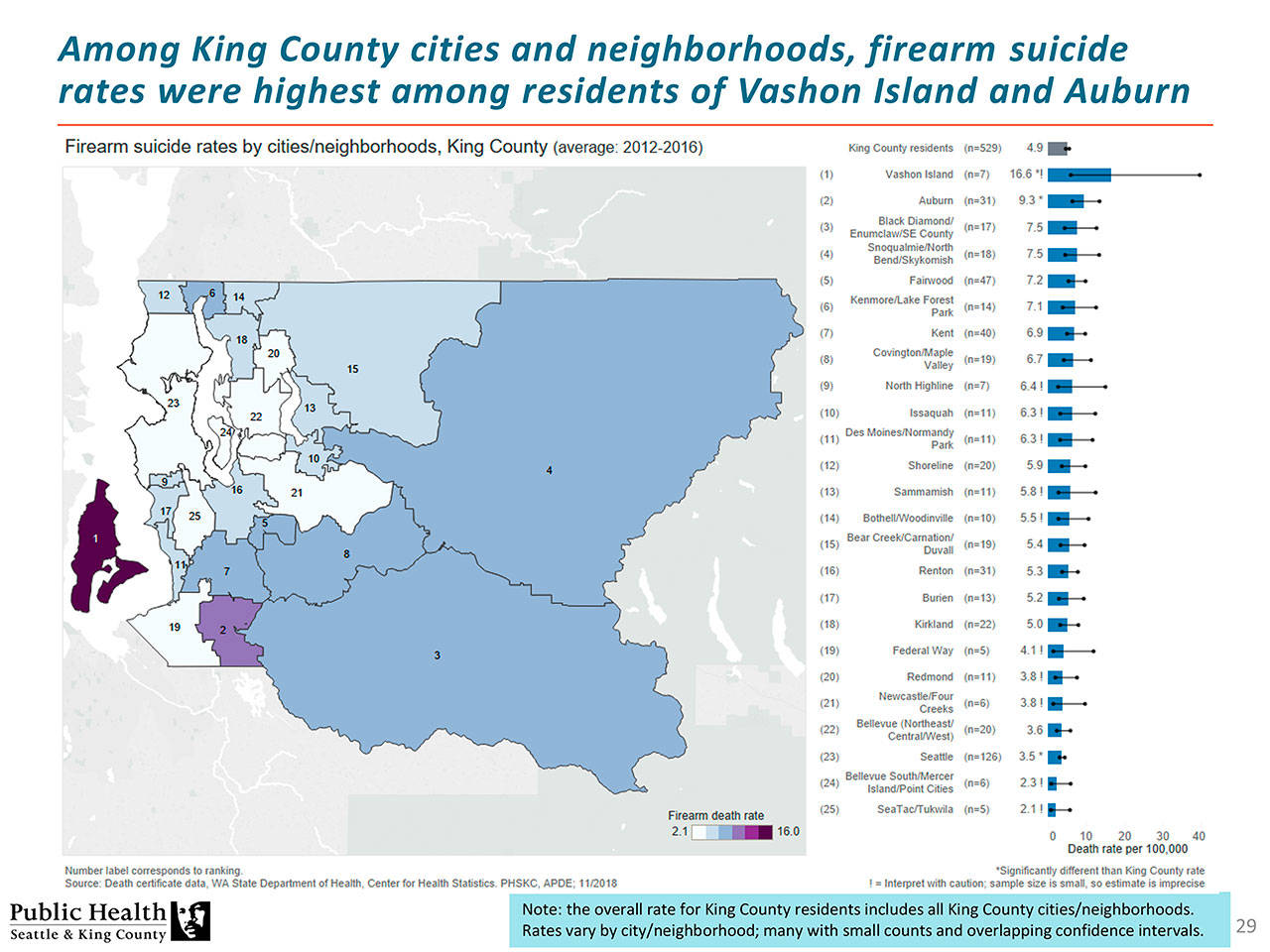The following was written by Lindsay Bosslet for Public Health Insider. This is a two-part series dedicated to explaining a recent data release about firearm deaths in King County and Seattle. You can access the complete data report here. In the last post Public Health Insider focused on the latest data on firearm homicide:
Our public health approach to gun violence is a framework that we use to understand how and when firearms are used unsafely, raise public awareness of firearm safety practices, and develop and evaluate upstream, evidence-based prevention programs in partnership with community stakeholders. This work hinges on effective data collection and analysis so that we can accurately assess community need.
Review our injury prevention team’s latest data release on firearm deaths in Seattle and King County, and you’ll find our most recent analysis of firearm deaths (both homicides and suicides). It looks at the data by geography, demographics, and over time in great detail, and we hope that this will help community and Public Health as they work to prevent gun violence.
WHAT WE LEARNED ABOUT SUICIDE IN OUR COMMUNITY
We’re making this post on our firearm suicide data during Mental Health Month because getting the support we need to keep a crisis from turning lethal is a key part of suicide prevention.
From 2012 – 2016, almost three quarters of deaths by firearm in King County residents were suicides. Middle-aged and older adults and men overall have higher firearm suicide rates than the King County average. By race, white, American Indian and Alaska Native* populations have higher rates of firearm suicides.
Unlike firearm homicide, suicides by firearm aren’t concentrated by poverty or neighborhood; this is something that affects all communities. Like homicide, a death by suicide affects many other people, and suicide risk can spread. (See note to journalists above.)
WHAT YOU CAN DO TO REDUCE THE RISK OF FIREARM SUICIDES
We know that a firearm in the home increases the risk of suicide. Firearms are the most lethal means of suicide and it is rare to survive a suicide attempt with a gun. Access to a firearm can greatly increase the risk of a temporary crisis, and suicide rates are higher in places with higher gun ownership. Fortunately, firearm owners have several options to prevent their guns from being used in a suicide.
- Store firearms locked up in and near home. This is particularly useful for preventing suicide by young people and household members struggling with behavioral health issues. Keep the key on your person or the combination private; combinations should be changed if a family member who is unauthorized to use firearms and/or in crisis knows them. In instances where origin of the firearm was known, seventy percent of young people under age 18 who died by firearm suicide in King County between 1999 and 2017 used a gun belonging to a family member. Reducing access to unsecured guns can save a life.
- If you or someone you live with are having a crisis or suicidal thoughts, did you know it’s legal for you to transfer your guns to a trusted friend or family member for safe keeping? This is a good way to keep yourself safe or ensure your firearms are temporarily out of reach for a family member in crisis. For more information, see the specific language of the law here.
- If you’re worried a family member who might have access to firearms may hurt themselves or someone else, you may be able to get an Extreme Risk Protective Order, which temporarily suspends that person’s ability to possess or purchase firearms. See here for more information.
Everyone can play a role in preventing suicide. Be aware of the common warning signs of suicide risk, and if you see warning signs in someone else or yourself, reach out for help! Asking for help in a crisis can be difficult for many of us, but it’s one of the best ways to protect ourselves when having suicidal thoughts. Some helpful resources:
- The National Suicide Prevention Lifeline
- Ayuda en Espanol
- Crisis Connections, the King County Crisis Line
- The Trans Lifeline
- The Trevor Project
*Some racial/ethnic groups and geographies in King County have small populations, making it difficult to reliably describe their health data and compare them with larger populations. The firearm suicide rate was high for American Indian/Alaska Native residents in King County although not significantly different from the rates for black, Hispanic, or white residents.


